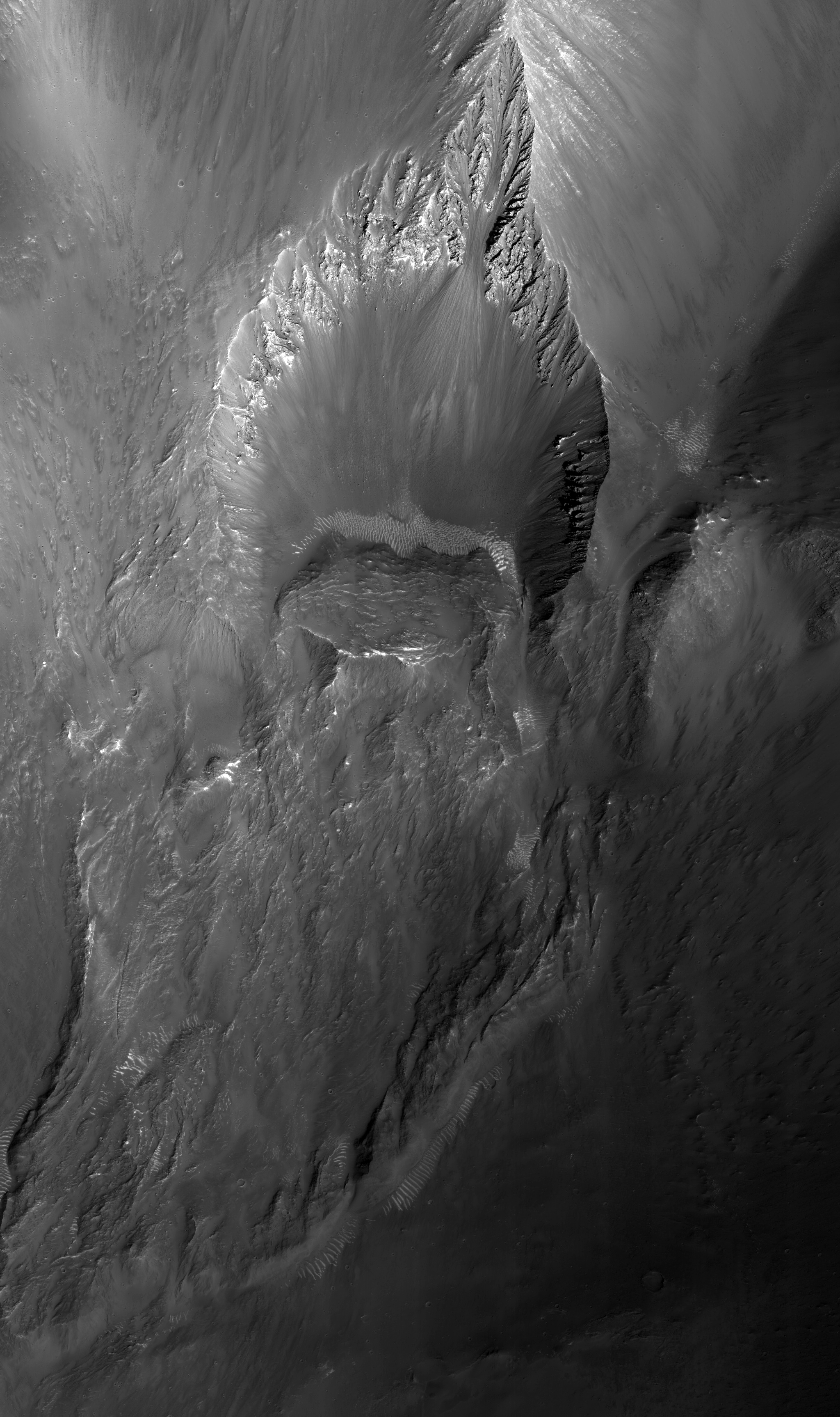NASA's HiRISE camera captures 3 kilometers wide impact crater on Mars

This throwback image from HiRISE, a camera onboard NASA's Mars Reconnaissance Orbiter (MRO), shows a roughly 3-kilometre impact crater in Tithonium Chasma, a large canyon system located in the Valles Marineris region of Mars.
This crater is non-circular, measuring about 3 by 4 kilometres. According to the HiRISE team, the shape of a crater is influenced by several factors, including the angle of impact and the pre-impact slope and topography.
"The ejecta—the debris that is generated and thrown out by an impact—will typically distribute itself evenly around the outside of the crater rim where the pre-impact surface is flat and the angle of impact is not too low. However, due to the highly inclined nature of the surface here, the ejecta deposited preferentially downslope, forming a tongue-like deposit," the HiRISE team explained in a post.
The smooth, dark-toned flow-like features superimposed on the ejecta blanket and flowing downslope are believed to be composed of impact melt or the mixture of rock and other material that melted upon impact and flowed down the slope before hardening.
HiPOD: On the Shape of Impact CratersThe shape of a crater can depend on factors including the angle of impact and the pre-impact slope and topography. https://t.co/FkOvEHF9ywNASA/JPL-Caltech/UArizona#Mars #science #NASA pic.twitter.com/DkIe5mY3pz
— HiRISE: Beautiful Mars (NASA) (@HiRISE) April 1, 2023
HiRISE, one of six instruments onboard the Mars Reconnaissance Orbiter, is one of the most powerful cameras ever sent to another planet, capable of capturing up to 30 centimetres per pixel.
Short for the High Resolution Imaging Science Experiment, HiRISE has been a valuable tool for studying Mars. The powerful camera has captured many high-resolution images of the Red Planet since its arrival in 2006, allowing scientists to study the geology and morphology of the Martian surface in unprecedented detail.
In addition to capturing stunning images, the HiRISE camera has been an indispensable instrument to identify potential landing sites for robotic and human exploration of the planet.
- READ MORE ON:
- Mars Reconnaissance Orbiter
- NASA HiRISE camera
- Impact craters










